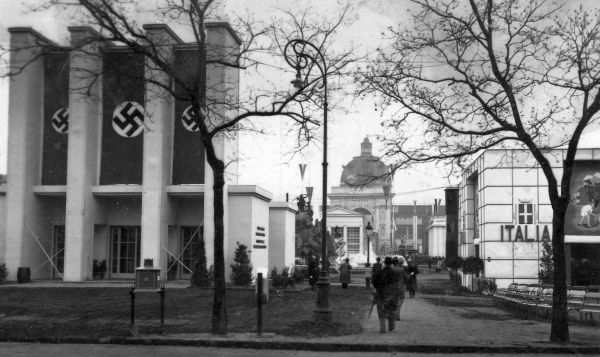From the Győr Programme to the Three-Year Plan
Passages on the Economic and Profession-Historical Correlations of the Birth of Hungarian Industrial Architecture
Text: Dominika Vámos

Budapest International Fair, 1941, Photo: FORTEPAN
As the role and responsibility of architects are not only significant factors of the evolution of man-made environment, but also affect the efficiency of economy, whilst inseparable from history and all kinds of mechanisms controlling its power relations and inner operation, this kind of interpenetration makes the moral issues ensuing from professional and supremacy systems, as well as from conflicts generated by conditions within the profession. To understand the behaviour-patterns and clout-driven activities of architects with an approach of sociology is indispensable in order to process the critical chapters of 20th-century Hungarian architectural history. Such a chapter is first of all the birth of Hungarian industrial architecture in the Modern Age starting with March 5th, 1938 when the so-called Programme of Győr was launched by Darányi and covers about ten eventful years around World War II.





